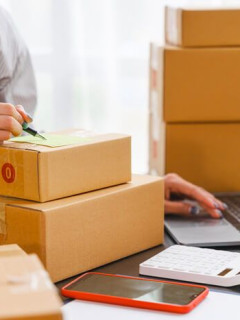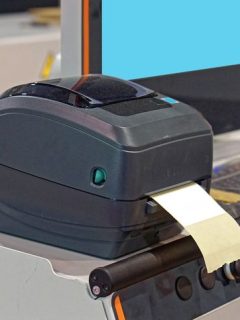“Bubble wrap or foam foil?” – this is the question asked by many entrepreneurs who, in the interests of their customers’ satisfaction, wonder what form of protection they should choose for their shipments during transport. Properly selected protective material guarantees that the goods ordered by the customer will arrive in perfect condition. Which form of protecting the contents of a parcel should be chosen – bubble wrap or foam? Find out!
There are many ways of securing shipments during transport. Among the most frequently used solutions, the most popular are bubble wrap and foam foil. It is worth remembering, however, that although they protect the contents of the parcel to a similar degree, look similar and have similar properties, each is intended for packing different types of products and goods.
History of bubble wrap (bubble film)
As it turns out, bubble wrap, also known as bubble wrap, came about by accident. In 1957, two American engineers – Alfred Fielding and Marc Chavannes – worked to create… plastic wallpaper.
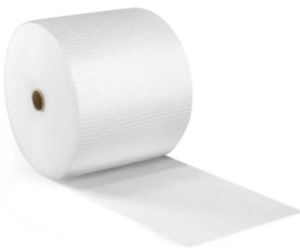 Initially, the men planned to construct a machine that would produce wallpaper with a paper backing, but instead, all that came out of the machine was a film, filled with numerous air bubbles. The constructors quickly turned failure into success, so that today, bubble wrap is one of the world’s most popular materials for securing a variety of items for shipment.
Initially, the men planned to construct a machine that would produce wallpaper with a paper backing, but instead, all that came out of the machine was a film, filled with numerous air bubbles. The constructors quickly turned failure into success, so that today, bubble wrap is one of the world’s most popular materials for securing a variety of items for shipment.
Structure of bubble wrap
Bubble wrap is lightweight, robust, provides excellent cushioning and adapts very well to the shapes of the items packed in it. Its phenomenon is based on regularly and densely spaced bubbles, filled with air. The film is made of a flexible material (polyethylene), which is characterised by high resistance to tearing and the effects of harmful external factors such as humidity or sunlight.
Bubble wrap – universal product protection
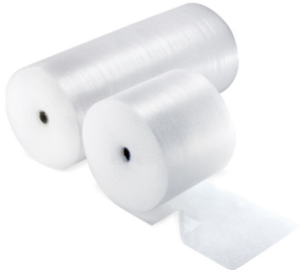
In order to ensure that the goods reach the recipient intact, entrepreneurs most often use the now traditional bubble wrap. Its numerous advantages are particularly appreciated wherever fragile, delicate and valuable items need to be protected from impacts, shocks or damage of any kind (especially mechanical damage).
Bubble wrap is not only ideal for wrapping transported goods, but is also suitable as a filling material for e.g. cardboard boxes, thanks to which the contents are effectively protected against shocks or uncontrolled movement.
Interestingly, many entrepreneurs use pieces of bubble wrap as spacers, which are placed between individual items that are stacked on top of each other for transport. Thanks to this, they do not scratch and are adequately protected.
By choosing bubble wrap, you can therefore count on effective protection of the goods being transported against:
- moisture
- scratches and other mechanical damage,
- contamination,
- shocks.
Bubble foil – forms
Bubble wrap is ideal for packing both small and large items. Foil with small bubbles (10 mm in diameter and 60 microns thick) is designed for packing fragile, lightweight and primarily small items, while foil with large bubbles (30 mm in diameter and 70 microns thick) is best suited to protecting fragile and heavy goods and items with sharp edges.
In our range of products, you can also find anti-static bubble wrap, self-adhesive bubble wrap and perforated bubble wrap in a special tray that protects it from dust and other dirt while making it easier to transport.
Bubble envelopes and bubble foil pouches with self-adhesive tape are also an interesting solution, thanks to which they can be easily closed – this type of foil is particularly suitable for protecting small, delicate items such as jewellery, CDs, etc. against damage and moisture.
Bubble wrap is also available in the form of anti-static bubble bags, which are designed for packing mainly electronic devices – smartphones, computer equipment or electronic components.
When to choose foam foil?
Foamfilm is a second highly effective material for protecting fragile and damage-prone goods. Unlike bubble wrap, it does not leave any visible and difficult to remove marks on polished and shiny materials such as metal, glass or wood.
Advantages of using foam film
Foam film is a very lightweight, flexible and thin material. It is characterised by its high scratch and abrasion resistance and, therefore, effectively protects the most delicate and valuable objects from any kind of damage.
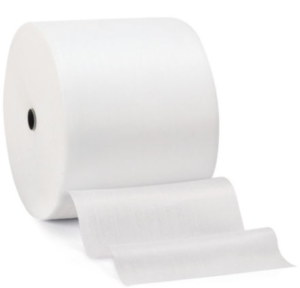 Inside it, there are numerous small air bubbles, which guarantee excellent cushioning. Importantly, foam film is best suited to protect glass and polished wood products, which is a very delicate material and also prone to mechanical damage. This type of film is completely dust-free, leaves no fibres and has a white finish, giving it a very aesthetically pleasing appearance.
Inside it, there are numerous small air bubbles, which guarantee excellent cushioning. Importantly, foam film is best suited to protect glass and polished wood products, which is a very delicate material and also prone to mechanical damage. This type of film is completely dust-free, leaves no fibres and has a white finish, giving it a very aesthetically pleasing appearance.
In our range, you can find not only foam film, but also foam sheets. This is another type of protection that can be used for reinforcing, blocking, separating items or strengthening them. They offer solid package reinforcement and are ideal for protecting large, fragile items such as furniture. They are constructed in a way that makes them more robust than foam film. They can easily be cut to size, making them easy to work with.
Foam film is thinner and lighter than bubble wrap, which means you can store more square metres in storage and will take up less space in cardboard boxes. It is ideal for shipping delicate products with premium polished surfaces, as its smooth texture does not leave a mark on products.
If you would like to find out more about protective packaging and make sure bubble wrap or foam is the right choice for your products, please contact our packaging specialists on 801 55 300 or visit our website at www.rajapack.pl.











